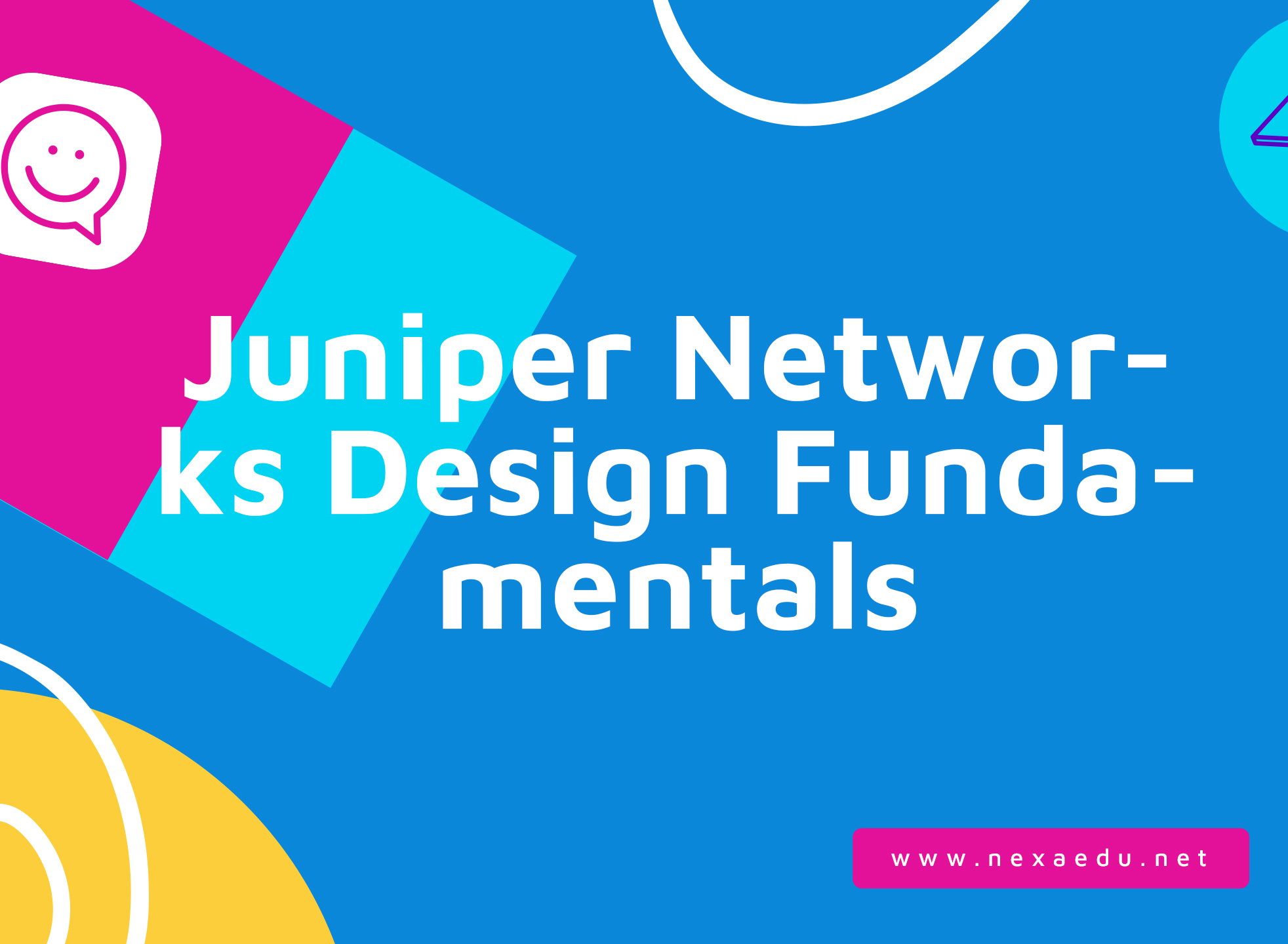About this course
Course Overview
This three-day course is designed to cover best practices, theory, and design principles for overall network design and will serve as the prerequisite course for other design subject areas — data center, security, and WAN.Target Audience
This course is targeted for Juniper Networks system engineers, partner sales engineers (including Champions), and services partners. However, the course is also applicable to a general audience of Juniper customers with a desire to learn more about network design.Course Objectives
After successfully completing this course, you should be able to:
- Provide an overview of network design needs and common business requirements.
- Describe key product groups related to campus, WAN, data center, and security architectures.
- Analyze and interpret common RFP requirements.
- Scope a network design by gathering data and working with key stakeholders.
- Describe ways of processing customer data and design requests.
- Identify boundaries and scope for the design proposal.
- List some considerations when creating a design proposal.
- Provide an overview of network security design principles and common vulnerabilities.
- List high-level design considerations and best practices for securing the network.
- List the components of the campus network design.
- Describe best practices and design considerations for the campus.
- Describe architectural design options for the campus.
- List the components of the WAN.
- Describe best practices and design considerations for the WAN.
- Describe design options for the WAN.
- List the components of the data center design.
- Describe best practices and design considerations for the data center.
- Describe architectural design options for the data center.
- Define business continuity and its importance in a network design.
- Describe high availability design considerations and best practices.
- Provide an overview of high availability offerings and solutions.
- Describe Class of Service design considerations.
- Provide an overview of environmental considerations in network design.
- List design considerations and best practices for managing the network.
- Provide an overview of Juniper Networks and third party options for network management.
- List design considerations and best practices for network automation.
- Provide an overview of automation tools.
- Explain the foundational topics that have been taught throughout the course.
- Create a network design proposal that satisfies customer requirements and business needs.
- Provide an overview of the steps involved in migrating a network.
- Describe best practices used in network migration.
- List the various campus network topographies.
- Describe sample design options for the campus.
Course Content
Chapter 1: Course Introduction
Chapter 2: Network Design Fundamentals
- A Need for Design
- Knowledge is King
- A Proposed Design Methodology
- A Reference Network
Chapter 3: Understanding Customer Requirements
- RFP Requirements
- Scoping the Design Project
- Analyzing the Data
- Lab: Understanding Customer Requirements
Chapter 4: Organizing the Data
- Processing the Data and Requests
- Understanding Boundaries and Scope
- Design Proposal Considerations
Chapter 5: Securing the Network
- Why Secure the Network?
- Security Design Considerations
Chapter 6: Creating the Design—Campus
- The Campus Network: An Overview
- Best Practices and Considerations
- Architectural Design Options
- Lab: Creating the Design—Campus
Chapter 7: Creating the Design—Wide Area Networks
- The WAN: An Overview
- Best Practices and Considerations
- WAN Design Examples
- Lab: Creating the Design—WAN
Chapter 8: Creating the Design—Data Center
- The Data Center: An Overview
- Best Practices and Considerations
- Data Center Design Examples
- Lab: Creating the Design—Data Center
Chapter 9: Business Continuity and Network Enhancements
- Business Continuity Planning
- High Availability Design Considerations and Best Practices
- Offerings and Solutions
- CoS and Traffic Engineering Considerations
- Environmental Design
Chapter 10: Network Management
- Designing for Network Management
Chapter 11: Automation
- Designing for Network Automation
- Lab: Enhancing the Design
Chapter 12: Putting Network Design into Practice
- Network Design Recap
- Responding to the RFP
- Final Lab Introduction
- Lab: Putting Network Design into Practice
Appendix A: Network Migration Strategies
- Migration Overview
- Migration Approaches
- Migration Examples
Appendix B: Sample Campus Designs
- Campus Topology Examples
Appendix C: Sample Response to RFP
- Example of an Actual Juniper Networks RFP Response
Course Prerequisites
The following are the prerequisites for this course:
- Knowledge of routing and switching architectures and protocols.
- Knowledge of Juniper Networks products and solutions.
- Understanding of infrastructure security principles.
- Basic knowledge of hypervisors and load balancers.
Test Certification
- This course is recommended training for the Juniper Networks Certified Design Associate (JNCDA) exam
Follow on Courses
The following are recommended for further study:- JND-DC - Juniper Networks Design - Data Center
- JND-SEC - Juniper Networks Design Security
- JND-WAN - Juniper Networks Design-WAN
Comments (0)

0
0 Reviews





